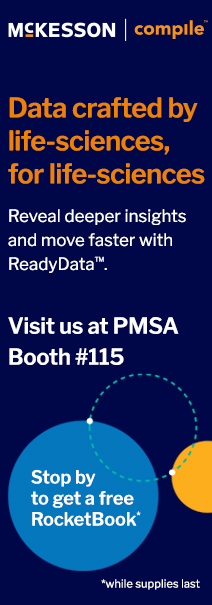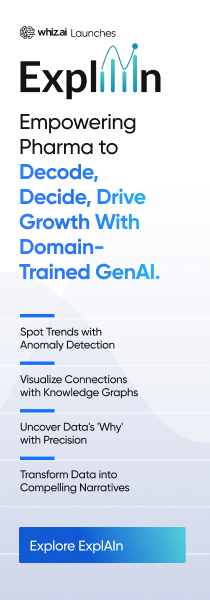Member Spotlight: Danny Kinney
 For our Spring 2016 Spotlight, we are focusing on PMSA Annual Conference keynote speaker Danny Kinney, Vice President, Global Business Intelligence, Sanofi. We asked Danny for his take on the state of the pharma commercial analytics industry.
For our Spring 2016 Spotlight, we are focusing on PMSA Annual Conference keynote speaker Danny Kinney, Vice President, Global Business Intelligence, Sanofi. We asked Danny for his take on the state of the pharma commercial analytics industry.
PMSA: What are the biggest barriers that pharma commercial analytics functions have right now?
Danny Kinney: It is a particularly exciting time to be an analytics professional – in any industry, and certainly in pharma. It’s the era of big data, technology is delivering increasingly powerful tools and capabilities to extract insights from data, and insights and analytics are becoming real-time (look at Google Analytics). The rest of the world is catching up to what we have been trying to tell them – the intelligent application of data and analytics to a growing range of business problems is critical to maximizing company success.
Interestingly, I don’t think that the biggest barriers facing commercial analytics functions today have much to do with the analytics themselves – as in how to tackle a given business problem, or what modeling approach to take in a given situation. The biggest barriers more frequently have to do with operationalizing analytics – ensuring value-adding analytics are enabled and consistently applied to the full set of company decisions and process that would benefit by them.
Admittedly, that’s kind of a big bucket. Sometimes the barrier is the availability of the right data, either within the company or to the analytics team. Sometimes it is in the data infrastructure or supporting processes to ensure data are high quality, analytics-ready, and repeatable. Sometimes the barrier is related to organizational or human issues, so that analytics applied and refined in one business or geography are not applied more broadly for any number of reasons.
PMSA: What is the one thing that pharma commercial analytics functions could be doing a better job at?
DK: Commercial analytics functions everywhere should have a short-, medium-, and long-term vision and plan for the growth of their function, and how they will deliver increasing value to their company through the growing number of company decisions that can benefit from data-based decision-making and thoughtfully applied analytics. This plan should prioritize the types of analytical work the group is undertaking, the brands or geographies they are supporting, and should specifically include plans to overcome barriers to operationalizing analytics.
PMSA: How are the manufacturers adapting to availability of big data tools to be effective and efficient in answering complex business questions?
DK: As with other aspects of analytics, pharma manufacturers have tended to lag other verticals in the adaption and application of new technology, and I think big data tools represent another example of this. Of course, this doesn’t apply universally, but on the whole, some of the most widely used and leveraged data assets for driving business insight are structured data, and aren’t all that “big.”
Not that this is a bad thing. Rather, I think it provides pharma manufacturers an opportunity to identify and leverage technologies and tools that have been forged and field-tested in other industries – internet, social, etc. – and to apply them once they have become more established, de-risked, and stable. Perhaps still cutting edge, but not bleeding edge.
And it’s a good thing that this opportunity exists, because everyone is being influenced by what has become possible during the era of big data – although volumes and types of data are exploding, expectations of what’s possible and over what time frame are collapsing.
PMSA: What do you see in the near future for manufacturer in-house commercial analytics teams as more data becomes available and off-shoring becomes more prominent for the analytics world?
DK: For a number of years, megatrends in globalization and data management and analytics technology drove significant opportunities to take analytics work that was once done exclusively in-house or with on-shore partners and move it off-shore. And these trends in globalization and data management and analytics technology remain firmly in place – data moves increasingly easily, technical skills become more readily available, analytical skills and training are unquestionably global. And the number of potential off-shore partners has grown in step.
But I think that these trends have gone so far as to have gone beyond another inflection point, and change the nature of what was once a “one-directional trade”. Today, it is just as likely that an analytics process that utilizes large data management teams, established data infrastructure, and expensive analytical software packages and servers could be performed by a dramatically smaller team (or an individual) using open source software and cloud-based data hosting and management. In places within our company, we have re-on-shored processes and activities that had been moved previously -- lowering cost, accelerating cycle times, and increasing capabilities in the process.
I view this abundance of approaches to operationalizing analytics today as another key competency that companies should expect from their in-house commercial analytics teams – not only what analytics can and should be applied to business problems, but what the optimal approach is to executing (and yes, operationalizing) the analytics given the many different available approaches.
PMSA: Thank you for taking the time to share your thoughts with us.





